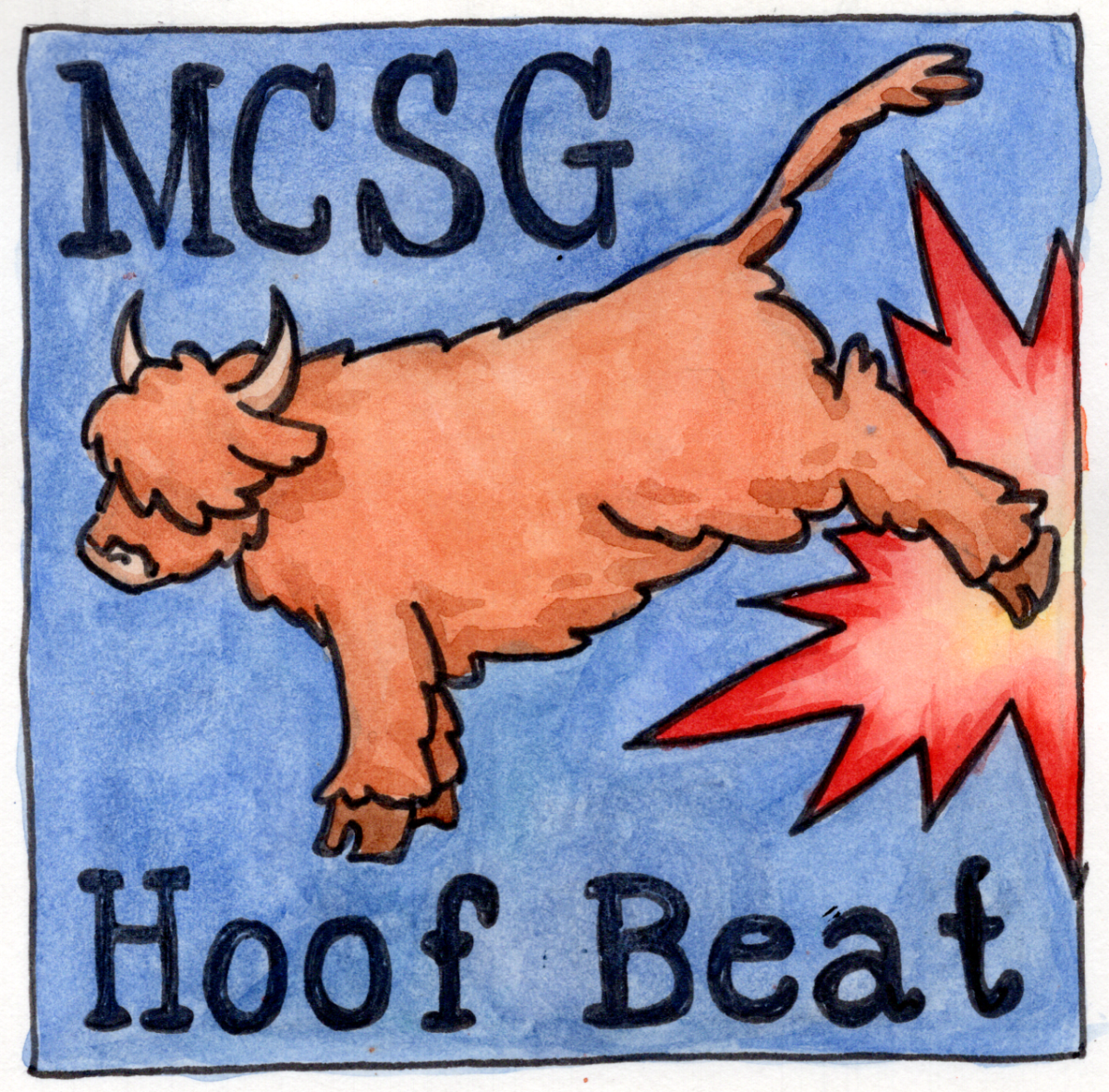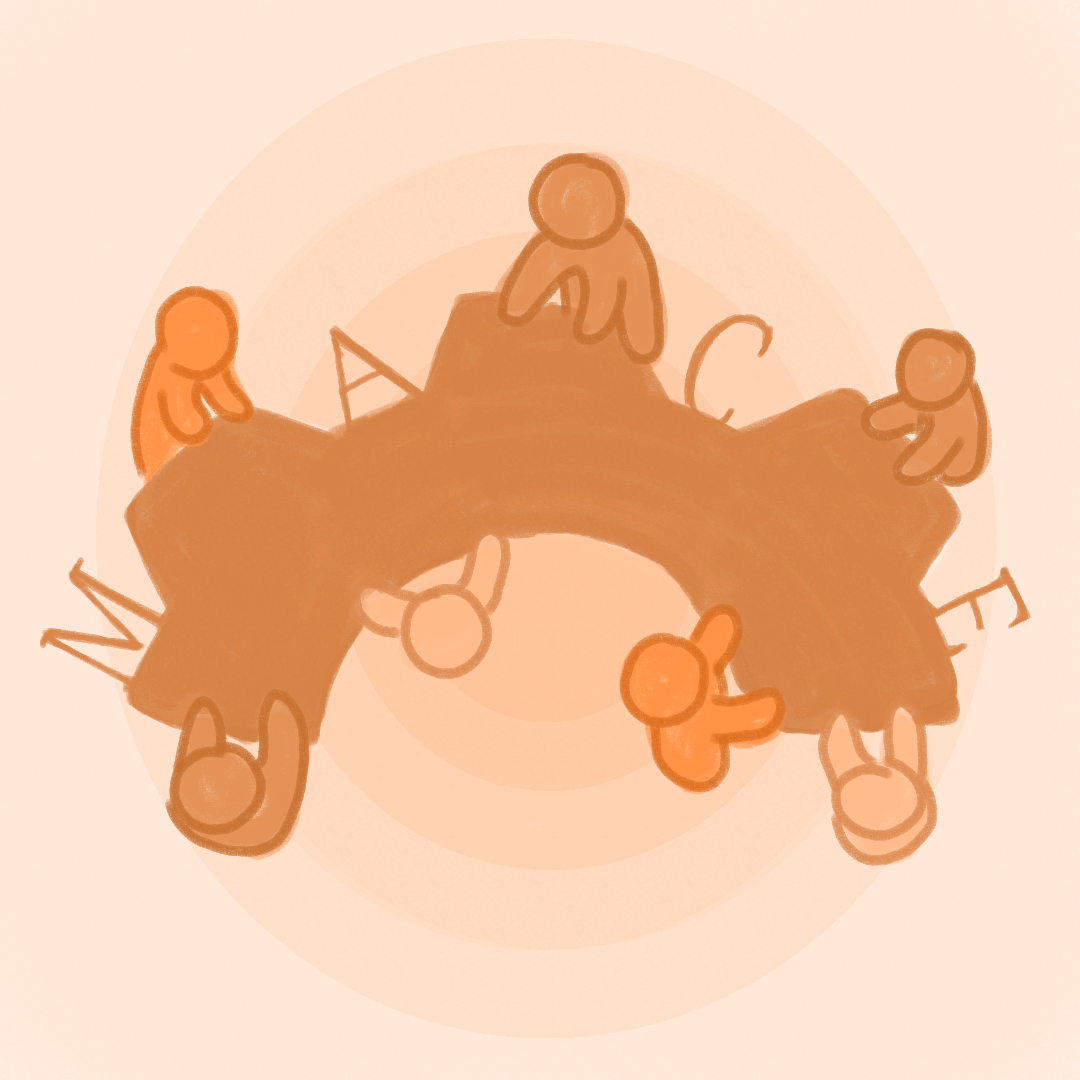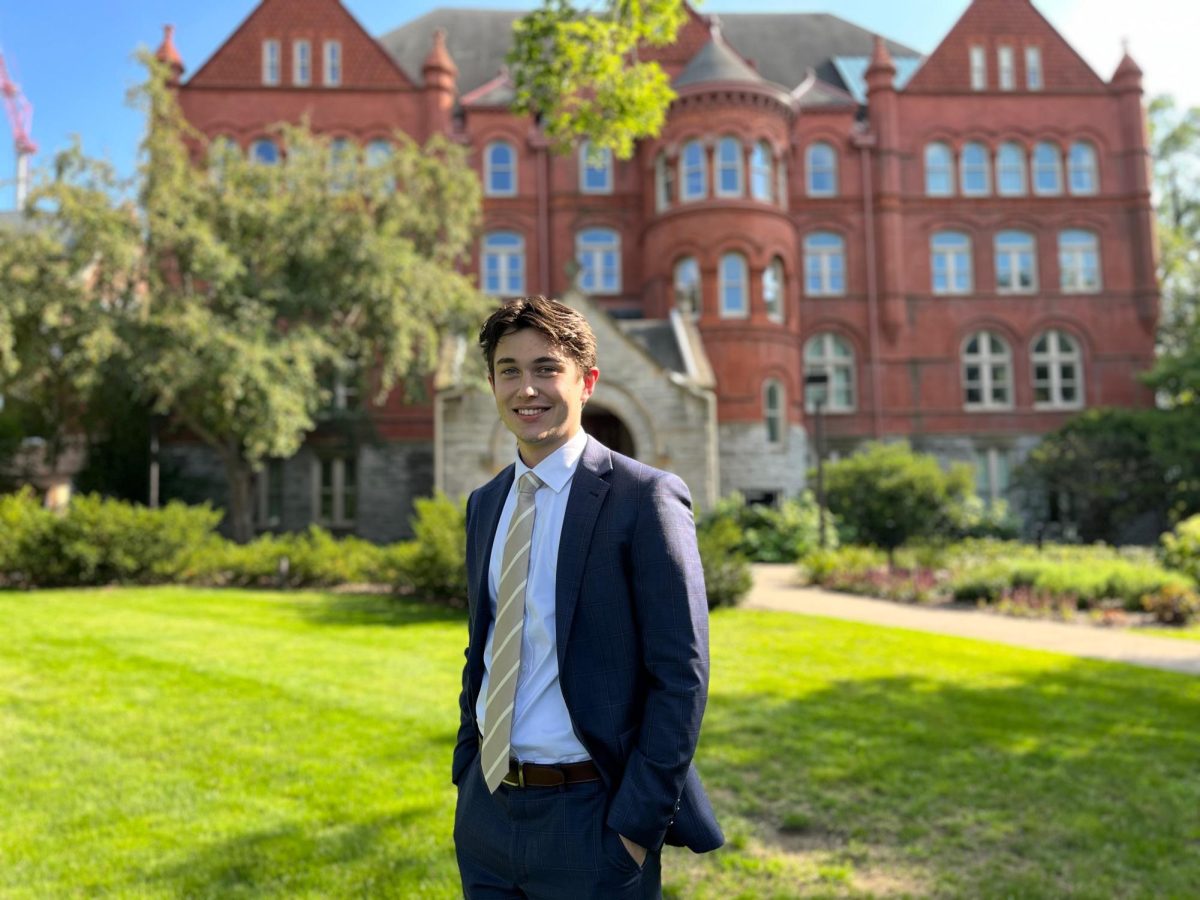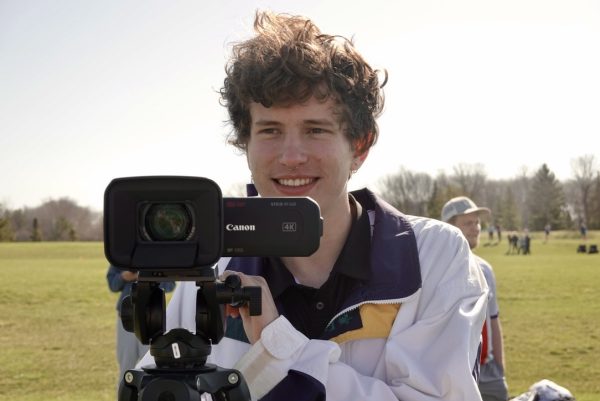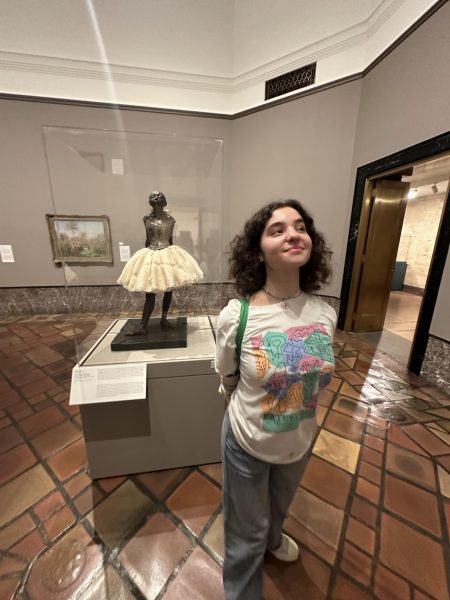Last Friday, April 19, Macalester held its 11th annual Critical Theory Symposium, including lectures, discussions and food and drink.
The structure of a symposium is a bit different than other events at Macalester. While other presentations might just include a lecture and a short Q&A, the symposium focuses on dialogue from the audience.
“We really want to have an event which is fun,” Professor and Chair of German Studies Kiarina Kordela said, reflecting on the symposium. “All the Q&A happened while people were eating and drinking and … they stayed there until the end.”
Kordela started the event with a quick thanks to all who made it happen, and a goodbye to current seniors studying in the critical theory concentration. Each received a book of their choice and copy of “Amerika” by Franz Kafka, as well as a round of applause from students, staff and alumni alike.
The event included two lectures from Macalester professors — Music Professor Mark Mazullo and Sociology Professor Christina Hughes — followed by a break for food catered by Spicy Feta and a longer discussion on the two lectures.
The first talk was given by Mazullo, who presented about the intersection between critical theory and opera, specifically in the changing role of the orchestra throughout different centuries. Mazullo explained how the role of music has shifted from a materialistic role to a more transcendent form of information. Using scenes of recognition from four different operas from four different time periods, he illustrated exactly how changing social conditions in Europe were reflected in the art.
His first example was from Giuseppe Verdi’s 1857 opera “Simon Boccanegra,” where the titular character and a noblewoman named Amelia realize they are father and daughter. Here, the music represents the emotions of Boccanegra — “music box harps twinkle as he projects himself into a future colored by his daughter’s lost love,” Mazullo commented. The opera is about and for the bourgeois class: a “high art” spectacle not easily accessible.
Mazullo’s second example was drawn from Mozart’s 1786 “The Marriage of Figaro,” where the servant Figaro realizes the woman he is pressured into marrying is his mother. Here, the music serves as a uniting factor, able to convey all of the emotions of noblemen and servants alike in a harmonious way, turning potential chaotic tension into comedic and lighthearted structure.
The third opera discussed was Verdi’s 1851 opera “Rigoletto.” Specifically, a scene where Rigoletto realizes, though a series of miscommunications bent on revenge, he had mistakenly called on an assassin to kill his daughter. In this example, Mazullo said, the music serves as both narrator and nature, using shaky violins to imitate the sound of wind and thunder. It works to put the audience into the scene, able to feel the fear and horror Rigoletto does, both the fear directed at himself and at the patriarchal and class discrepancies that inserted him into this situation in the first place.
Finally, Mazullo discussed Richard Strauss’ 1909 opera “Elektra,” which uses music to express Elektra’s conflicted and chaotic emotions when seeing her long-lost brother, using different mismatched instruments, tempos and motifs to paint a picture of pure discombobulation. Mazullo went on to further highlight the different ways music shows us the dynamics, relations and identities of characters of each opera.
“[Mazullo’s talk was] very interdisciplinary — that’s critical theory,” Kordela said. “If you only know musicology, you cannot do it. Musicology doesn’t think about the relation between music and political authority or the constitution of subjectivity. In order to think, you have to bring them all together.”
The second talk was by Hughes, who presented the role of surveillance technology in the profiling and punishment of immigrant groups, specifically in the subjugation of Vietnamese communities under capitalism. She started with an example from the early 1990s, when AT&T started reporting on stolen computer chips in Little Saigon, a historically Vietnamese district in Orange County, California, eventually pinning them to numerous gangs in the area. Local law enforcement decided a centralized criminal database would work most efficiently to pinpoint the specific culprits, but what are the origins of this technology? How has it come to target particular groups? How had the actions of the thieves come to be painted as a moral failure?
To answer these questions, she commented on how the technology displayed at both the 1902 Hanoi exposition in French Indochina and the 1964 World’s Fair in New York City worked to perpetuate an era of surveillance weaponized against Vietnamese immigrants.
Hughes first outlined how the origins of surveillance technology started in the Hanoi exposition. First, through the showing of agricultural innovations, classic Vietnamese artifacts, and sometimes the exhibiting of the people themselves, the effects of French colonization were literally on display. One pavilion in the exposition showed the new ID survey technology of China’s new immigration and identification service. Taking physical measurements of each person surveyed, the information could be stored in organized filing cabinets, making for bureaucratic and precise identification. By such classification, the role of the “criminal” started to take shape, a startingly easy label to apply, and an impossible label to remove.
At the World’s Fair, Hughes claimed, this technology began to further proliferate in a modern, capitalistic society. In the midst of a Cold War era, global order was of the essence, and the U.S. was more than happy to show off the identification technologies they had to make sure of it. Through displays and pavilions of technologies from voice recognition to a computer that told which historical events happened on a specific day, Hughes’ talk discussed how the World’s Fair paved the way for the remote surveillance and software used in the Vietnam war. Remote sensing worked to particularly scope out the movements of Vietnamese troops for US strategy. Additionally, ID technology for all Vietnamese, even those who the U.S. claimed as allies, encouraged the view to look at all Vietnamese as suspects, regularly surveyed and tracked.
Finally, Hughes brought these ideas back to the original framing device of the AT&T story, and to the modern day. First, the computer chip thieves were seen as a threat due to their refusal to nicely fit a specific stereotype.
“Unruly refugees oppositional to assimilating into America’s IT workforce as precarious laborers posed a threat to the neoliberalizing and globalizing economy,” she explained.
And these surveillance technologies aren’t limited to just these three examples. Hughes pointed to these identification methods in identification AI in Gaza used by Israel, in the U.S. prison system and in border patrol.
“It is a rigged game with lethal consequences,” Hughes said.
“[Mazullo and Hughes] are so knowledgeable and did an incredible job speaking to us non-experts about their respective impressive topics,” Ava Ver Ploeg ’27 said. “[Hughes’] talk exceptionally demonstrated the possibility for [critical theory] to cover a wide range of topics, tying organized crime to scientifically ‘justified’ racism to bureaucracy.”
“It’s really nice to see how a community can still be formed even though there isn’t some basis like a specific department,” Cade Klein ’27 said. “ I think the symposium part of having food and drink and being able to talk with professors was really nice, … just to have a more casual relationship with everyone.”
The symposium closed with a short Q&A where students and faculty alike posed questions to further develop the unique perspectives of each speaker.
Critical theory at Macalester has been around since 2012. Before then, Kordela worked in what was the humanities and media and cultural studies department (HMCS) under a specific critical theory focus, in addition to German studies. But in 2012, with specific student expression, the critical theory concentration was created by Kordela, Sociology Professor Kaldoun Samman, German and Russian Studies Professor David Martyn and Professor Emeritus Clay Steinman, with explicit support from the recently changed media and cultural studies (MCST) department. Because of critical theory’s position in undergrad college education, Macalester took a big step forward with the decision.
“[Undergrad] colleges don’t have critical theory in this country or anywhere,” Kordela said. “But it’s very, very widespread on the graduate level in this country.”
Since then, the concentration has served as a transdisciplinary distribution focused on the methodology for analyzing different disciplines, as opposed to idea-driven majors, minors and distributions.
“You can define whatever any field is by saying its object,” Kordela explained. “Critical theory doesn’t have a particular route. It’s a methodology, it’s an approach.”
“I enjoy engaging in a transdisciplinary exchange of ideas with others and in sharing a disciplined skepticism towards truth claims that take themselves too seriously,” said Hughes in an email to The Mac Weekly. “My hope would be for any academic program, including CT, to be open to that conversation.”
Right now, the critical theory program consists of three academic divisions, 16 departments, 28 professors this term and, including graduating students, 38 concentrators. Its current steering committee includes Kordela, professor and chair of religious studies Eric Davis, Edith M. Kelso art history associate professor Joanna Inglot, Martyn, international studies and English associate professor David Moore and Samman. For many students, the critical theory program provides an interesting lens to look at the world through.
“I would say that critical theory … is one of the things that Macalester shines in,” Klein said. “There’s certain critical theorists who are talked about in all of my classes, and I think that it’s really interesting how you can have all these different departments where the same people can be used in so many different but also similar ways.”
“And that’s what I think makes it very interesting, more interesting than each of these fields in isolation,” Kordela said. “I like philosophy, religious studies, political theory, etc., but I like to bring them together and understand the world from interdisciplinary perspectives.”



